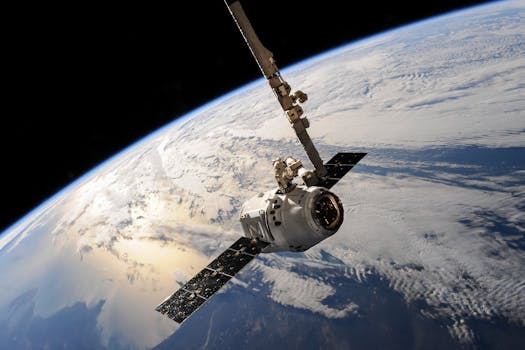The Future of Satellites: Revolutionizing Global Connectivity
The future of satellites is poised to revolutionize global connectivity, enabling faster and more reliable communication, navigation, and remote sensing. With advancements in space technology, satellites are becoming increasingly important for various applications, including telecommunications, Earth observation, and space exploration.

The Future of Satellites: Revolutionizing Global Connectivity
The future of satellites is poised to revolutionize global connectivity, enabling faster and more reliable communication, navigation, and remote sensing. With advancements in space technology, satellites are becoming increasingly important for various applications, including telecommunications, Earth observation, and space exploration. The focus keyword future of satellites is an exciting topic that has garnered significant attention in recent years, and for good reason. In this article, we will delve into the world of satellites and explore their potential to transform the way we live and interact with each other.
Advancements in Space Technology
One of the primary drivers of the satellite industry’s growth is the rapid advancement of space technology. With the development of more efficient and cost-effective launch systems, such as reusable rockets, the cost of accessing space has decreased significantly. This has led to an increase in the number of satellites being launched into orbit, with many more planned for the future. Additionally, advancements in materials science and manufacturing have enabled the creation of smaller, lighter, and more powerful satellites, making them more versatile and capable of performing a wider range of tasks.
Applications of Satellites
Satellites have a wide range of applications, including telecommunications, Earth observation, navigation, and space exploration. Telecommunications satellites, such as those used for satellite TV and internet, provide connectivity to remote and underserved areas, enabling people to access information and communicate with each other more easily. Earth observation satellites, on the other hand, are used to monitor the environment, track weather patterns, and predict natural disasters. Navigation satellites, such as GPS, provide location information and timing signals, enabling accurate navigation and positioning. Finally, space exploration satellites are used to study the universe, conduct scientific research, and explore new frontiers.
Challenges and Opportunities
Despite the many benefits of satellites, there are also challenges and opportunities that need to be addressed. One of the major challenges facing the satellite industry is the issue of space debris, which poses a significant risk to operational satellites and other space-based assets. Additionally, the increasing number of satellites in orbit is creating concerns about congestion and interference, which could impact the performance and reliability of satellite systems. On the other hand, the growing demand for satellite-based services is creating new opportunities for innovation and investment, particularly in areas such as satellite manufacturing, launch services, and ground infrastructure.
Conclusion
In conclusion, the future of satellites is bright and exciting, with many opportunities for growth and innovation. As space technology continues to advance, we can expect to see more powerful, versatile, and cost-effective satellites being launched into orbit. With their wide range of applications, satellites have the potential to transform the way we live and interact with each other, enabling faster and more reliable communication, navigation, and remote sensing. Whether you are interested in telecommunications, Earth observation, navigation, or space exploration, the future of satellites is an exciting topic that is sure to captivate and inspire.



